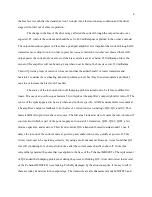
1
Repairing the Hafler 9503/9505 Amplifiers
A friend of mine brought over a Hafler 9505 amplifier that made a thump when turning off. I
removed the top cover and ran the unit for less than an hour and discovered some very hot transistors.
My electronic thermometer indicated some of them were near 100 degrees C. Not a good situation to say
the least, so I started to investigate.
After locating and studying the schematic, I learned the transistors are used in a complimentary
PNP and NPN configuration to drive the output stage. All eight transistors are in TO-92 packages, which
can dissipate a maximum of 625 milliwatts if kept at 25 degrees C. Above this temperature, the rating
decreases significantly and these transistors were well above 25 degrees C. By reading the voltage drop
across R44 and R48, I was able to determine they were both passing well over 40 ma and Q15 was
consuming approximately 500 mw and Q16 nearly 600 mw. After an exhaustive effort to find the cause of
the excessive current flow through the driver stage, I came to the conclusion that the biasing circuit as
designed and implemented was over driving them into failure. I replaced several of the transistors and
built a nice heatsink for each set out of circuit board material. This helped to cool them down but the
dissipation was still too high. The current through the driver transistors is controlled by diode D5, which
conducts current that would otherwise be going into the emitters of transistors Q12 and Q13. However,
D5 is not conducting enough current to keep the driver stage out of trouble. The maximum voltage across
D5 cannot exceed 1.2 volts and any attempt to do so will pump more current into Q12 and Q13 and on to
the driver transistors. There is no bias adjustment for the driver stage so I installed a resistor and
potentiometer across D5 to siphon off some of the current to reduce the amount going through the driver
transistors. A test with a sin wave showed that at the absolute maximum input drive level of 6 volts peak
to peak, the current flow through the driver transistors only varied by a few milliamps. After letting the
amplifier warmup for a few hours, I set the bias current to 16 milliamps by using a digital voltmeter to
read the voltage drop across R44 and setting it to .8-volt DC. There appeared to be very little current
creep after running the amplifier for several more hours and the transistors are only warm. This means























